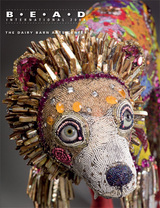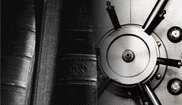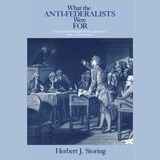3 books about Baskets

Bead International 2008 and Beyond Basketry
Andrew R. Lewis
Ohio University Press, 2008
This unique book combines two catalogs in one. Bead International 2008 & Beyond Basketry represents the best of two juried exhibitions held at the Dairy Barn Arts Center in Athens, Ohio. Beads have long been worn as jewelry, but in Bead International 2008 contemporary bead artists are shaking things up. From fine jewelry to loom weaving to sculpture, the sixty-eight pieces by fifty-one artists in this collection represent some of the most innovative and well-executed art in the modern beading world. Considering any pierced object to be a bead, pieces range in style from the traditional to the whimsical as they incorporate a variety of colors and materials. This vibrant collection will spark the reader’s creativity and broaden his or her perspective. When the age-old art form of basketry is combined with contemporary visions and techniques, the result is the striking Beyond Basketry, a collection of sixty-five artworks created by forty-two artists from across the United States. The artworks represented in these beautiful color photographs will challenge the reader’s ideas of what constitutes a basket. All artworks are vessels made of woven materials, but the pieces explore a variety of sizes, colors, shapes, and techniques
[more]

Heritage and Change
Southern Paiute and Chemehuevi Nuwuvi Basketry, 1870 to 2022
Catherine S. Fowler
Museum of New Mexico Press, 2025
The Southern Paiute and Chemehuevi people have lived for countless generations in the southern Great Basin of western North America in a homeland that extends to parts of Utah, Nevada, California, and northern Arizona. Referred to by a variety of names and spellings in the EuroAmerican literature, they are the people whose name for themselves is “Nuwu”—or collectively, “Nuwuvi.” Nuwuvi basket weaving is a traditional and evolving art form that connects weavers to their ancestors and to the natural world.
This publication, years in the making, includes chapters by Catherine S. Fowler, Judith W. Finger, John J. Kania, and Larry Dalrymple that explore the cultural history of the Nuwuvi people, the work of known weavers, and the characteristics and development of Nuwuvi basketry from the 1870s to 2022. It focuses particularly on the fine-coiled work produced during the American Arts and Crafts Movement period of the 1890s to 1930s. Working separately and together, the authors analyzed over 1,200 baskets in museum collections across the United States, from the Smithsonian Institution in Washington, D.C., to the Lost City Museum in Henderson, Nevada. They researched the baskets’ collectors—from John Wesley Powell to Helen J. Stewart and Isabel T. Kelly—and conducted interviews with contemporary weavers. In order to give the reader as broad a visual understanding of Nuwuvi coiled baskets as possible, images of baskets from the collection of Judith and Andrew Finger are included. The book is lavishly illustrated with archival and contemporary photographs.
This publication, years in the making, includes chapters by Catherine S. Fowler, Judith W. Finger, John J. Kania, and Larry Dalrymple that explore the cultural history of the Nuwuvi people, the work of known weavers, and the characteristics and development of Nuwuvi basketry from the 1870s to 2022. It focuses particularly on the fine-coiled work produced during the American Arts and Crafts Movement period of the 1890s to 1930s. Working separately and together, the authors analyzed over 1,200 baskets in museum collections across the United States, from the Smithsonian Institution in Washington, D.C., to the Lost City Museum in Henderson, Nevada. They researched the baskets’ collectors—from John Wesley Powell to Helen J. Stewart and Isabel T. Kelly—and conducted interviews with contemporary weavers. In order to give the reader as broad a visual understanding of Nuwuvi coiled baskets as possible, images of baskets from the collection of Judith and Andrew Finger are included. The book is lavishly illustrated with archival and contemporary photographs.
[more]

Weaving Nature
Basketry from Plants to People
Mark Nesbitt and Ruth Stungo
Royal Botanic Gardens, Kew, 2024
A groundbreaking holistic view of basketry that connects plant to product, combining insights from ethnobotany and basket making.
Basketry is a sustainable expression of human ingenuity, and Weaving Nature takes a holistic and interdisciplinary view of the journey from plant to basket. It explains why certain plants are favored by makers and shows how the raw materials are worked to achieve the desired use. This book covers a vast array of basketry types, ranging from netting to quivers from all parts of the world and dating from ancient Egypt to the current day.
Heavily illustrated with approximately three hundred baskets from the historic ethnobotanical collections of the Royal Botanic Gardens, Kew, this book is rich in stories of people, from the communities that made and used basketry to those that collected objects and brought them to Kew over the last two hundred years.
New discoveries in Kew’s archives shed light on the complex web of empire, trade, and exploration that brought so many baskets to Kew in Victorian times. Rich in stories, historical context, and images, Weaving Nature offers new ways of appreciating one of humankind’s oldest art forms.
Basketry is a sustainable expression of human ingenuity, and Weaving Nature takes a holistic and interdisciplinary view of the journey from plant to basket. It explains why certain plants are favored by makers and shows how the raw materials are worked to achieve the desired use. This book covers a vast array of basketry types, ranging from netting to quivers from all parts of the world and dating from ancient Egypt to the current day.
Heavily illustrated with approximately three hundred baskets from the historic ethnobotanical collections of the Royal Botanic Gardens, Kew, this book is rich in stories of people, from the communities that made and used basketry to those that collected objects and brought them to Kew over the last two hundred years.
New discoveries in Kew’s archives shed light on the complex web of empire, trade, and exploration that brought so many baskets to Kew in Victorian times. Rich in stories, historical context, and images, Weaving Nature offers new ways of appreciating one of humankind’s oldest art forms.
[more]
READERS
Browse our collection.
PUBLISHERS
See BiblioVault's publisher services.
STUDENT SERVICES
Files for college accessibility offices.
UChicago Accessibility Resources
home | accessibility | search | about | contact us
BiblioVault ® 2001 - 2025
The University of Chicago Press









